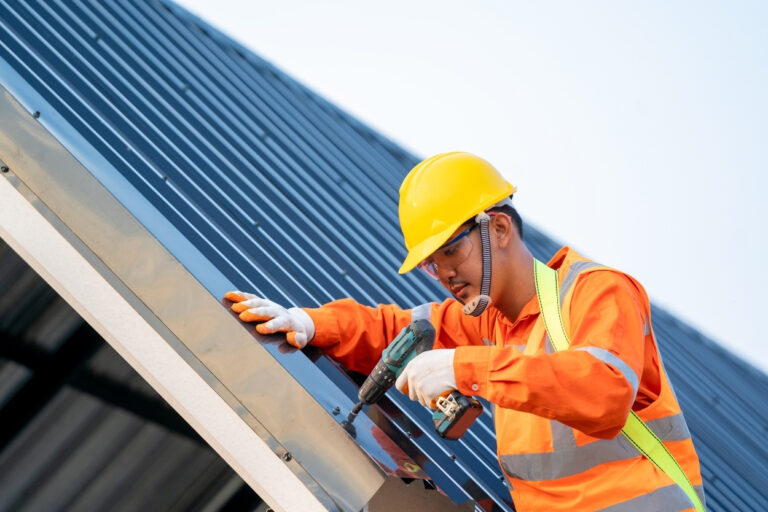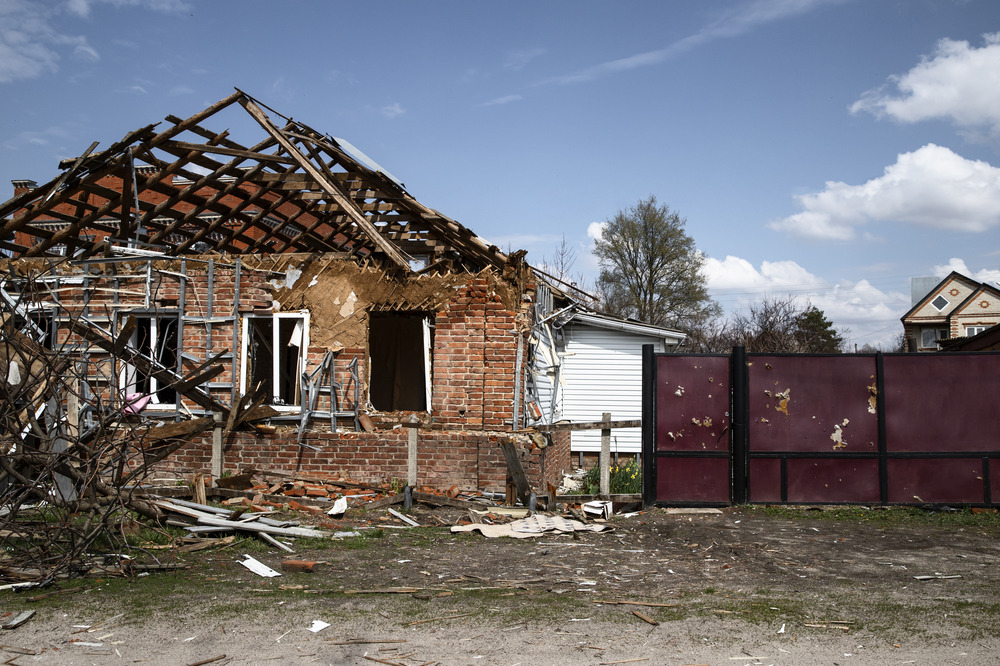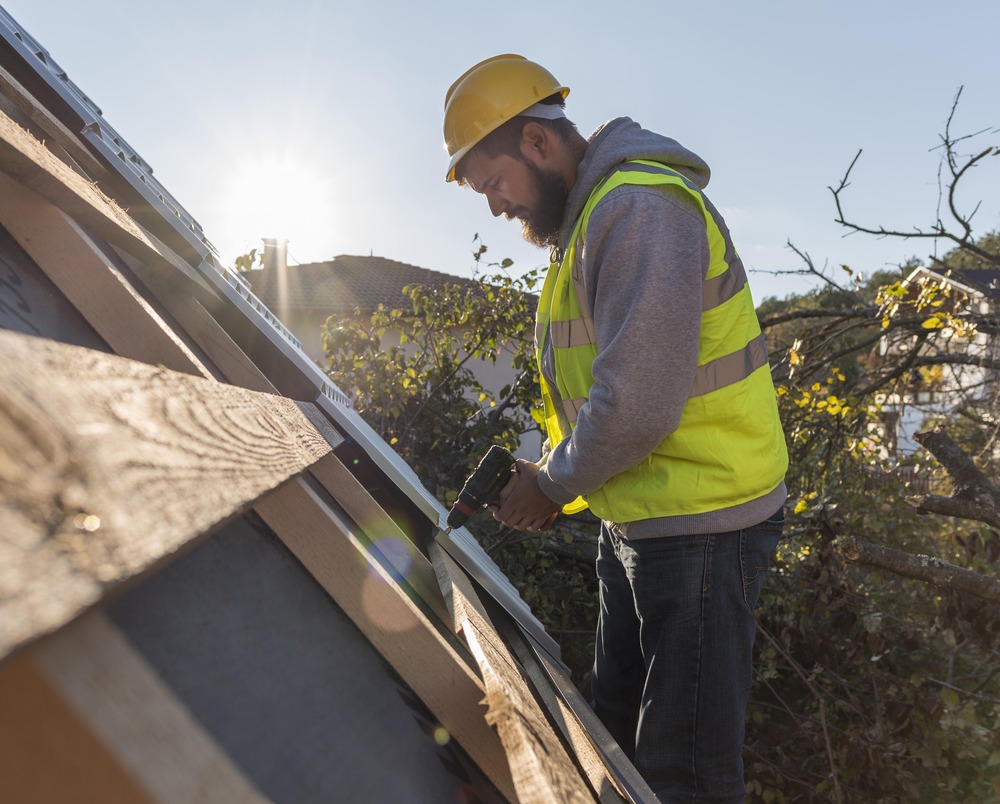
When to Consider Emergency Roof Repairs
Roofing emergencies can strike unexpectedly, putting homes and buildings at risk of severe damage and escalating repair costs. Recognizing the signs of emergency roof repair situations early and implementing immediate roof fixes can prevent further complications and ensure safety.
Here are five common scenarios that demand swift action and how professional assistance can mitigate risks.
Table of Contents
Key Takeaways✔ Severe storms can cause extensive roof damage from hail, debris, and heavy rain, requiring immediate professional repairs to prevent further harm. ✔ Persistent leaks lead to water damage, mold growth, and insulation inefficiencies, making early detection and repair essential. ✔ Heavy snow and ice accumulation can cause structural sagging, ice dams, and cracks, all of which require prompt attention. ✔ Fire damage weakens structural components, warps materials, and leaves lingering smoke issues, demanding swift restoration. ✔ Animal intrusions cause torn shingles, blocked ventilation, and chewed insulation, requiring humane removal and structural sealing. ✔ Regular inspections for hidden damage, such as attic moisture, sagging rooflines, and granules in gutters, help avoid escalating roofing emergencies. ✔ Choosing a licensed, insured, and responsive roofing contractor with a proven reputation ensures quality emergency repairs and long-term reliability. |

1. Severe Storm Damage
Severe storms can wreak havoc on roofs, with heavy winds, hail, and intense rain causing extensive harm. Shingles may be torn off, structures punctured by debris, and water intrusion can quickly escalate. Addressing these emergency roof repair situations immediately prevents additional damage and ensures safety.
Why Severe Storm Damage Requires Immediate Roof Fixes
- Wind-Related Shingle Loss: High winds can rip shingles from the roof, exposing the underlayment to rain and debris. Without proper coverage, water infiltration can lead to rotting wood and interior damage.
- Hailstone Cracks and Dents: Hail impacts can create cracks or dents in roofing materials, particularly asphalt or metal. These weak points often result in hidden leaks, leading to mold growth or ceiling stains.
- Debris and Fallen Branch Impacts: Storm debris, such as broken tree branches, can puncture the roof or collapse sections. Such impacts pose safety risks and require immediate attention to restore structural integrity.
How Professionals Address Storm Damage
- Detailed Storm Damage Inspection: Roofing experts thoroughly inspect the roof for missing shingles, cracks, and structural compromises. They document damage through photos and reports to support insurance claims.
- Temporary Protection and Water Prevention: Contractors apply tarps, roofing tape, or plywood over exposed areas to prevent water entry and further deterioration. These measures are crucial for stabilizing the roof until permanent repairs are made.
- Efficient Repairs and Reinforcements: Professionals replace damaged shingles, repair punctures, and restore underlayment layers. They also check for less visible issues, such as compromised flashing or vents, ensuring a fully restored roof.
2. Persistent Roof Leaks
Small roof leaks often go unnoticed until they become severe, turning into emergency roof repair situations that demand immediate attention. Persistent leaks can weaken structural components, damage insulation, and cause extensive interior harm. Addressing these urgent roofing issues ensures long-term safety and prevents expensive repairs.
Why Persistent Roof Leaks Require Immediate Roof Fixes
- Water Damage to Ceilings and Walls: Continuous leaks saturate drywall, paint, and plaster, leading to unsightly stains and sagging. Prolonged exposure can cause structural instability and require costly replacements.
- Mold and Mildew Growth: Damp areas from leaks create ideal conditions for mold and mildew, which can spread quickly. These growths pose health risks and weaken the building materials they infiltrate.
- Compromised Insulation Efficiency: Water infiltration soaks insulation, reducing its ability to regulate indoor temperatures. This leads to increased energy costs and discomfort for occupants.
How Professionals Address Persistent Leaks
- Advanced Leak Detection Techniques: Roofing specialists use thermal imaging and moisture meters to identify leak sources that may not be visible. These tools ensure precise diagnosis and targeted repairs for quick fixes.
- Sealant Applications and Flashing Repairs: Contractors apply professional-grade sealants to minor gaps and repair or replace faulty flashing around vents or chimneys. These fixes prevent further water intrusion by sealing gaps.
- Replacement of Damaged Materials: Professionals remove and replace saturated insulation, rotted decking, and water-damaged shingles. This restores the roof’s functionality and prevents recurring issues.
3. Structural Damage from Snow and Ice
Heavy snow and ice accumulation can put excessive weight on a roof, leading to dangerous sagging or collapse. Ice dams form along roof edges, trapping water and causing significant leaks. Acting quickly in these emergency roof repair situations is essential to prevent widespread damage.
Why Snow and Ice Damage Requires Immediate Roof Fixes
- Excessive Weight Compromises Structural Integrity: Snow buildup adds hundreds of pounds of weight, which can lead to sagging beams and collapsed roof sections. This creates safety hazards for occupants, as the roof can give in at any time.
- Ice Dam Water Infiltration: Ice dams prevent proper drainage, causing water to back up under shingles. This results in widespread leaks and water damage to ceilings and walls.
- Cracking and Splitting of Roofing Materials: The freeze-thaw cycle can crack tiles, loosen fasteners, and create splits in roofing materials. These openings allow water to seep in during thaws, which can lead to health-damaging mold growth.
How Professionals Address Snow and Ice Damage
- Snow and Ice Removal Services: Professionals use specialized tools to carefully remove snow and ice without damaging the roof. They also clear gutters to improve drainage.
- Ice Dam Prevention and Repairs: Contractors install heat cables or improve attic insulation to prevent future ice dams. They also repair shingles or underlayment affected by water infiltration.
- Structural Reinforcement: Roofing experts reinforce sagging beams and repair areas compromised by excessive weight. This ensures the roof can handle future snow loads safely.

4. Emergency Roof Repair Situations Caused by Fire Damage
Roof fires, whether caused by lightning, electrical issues, or wildfires, leave extensive destruction in their wake. Even minor fire damage can weaken the roof’s structural components. Responding to these urgent roofing issues immediately is critical to restore safety and prevent further harm.
Why Fire Damage Requires Immediate Roof Fixes
- Weakened Structural Components: Fire can burn through rafters, beams, and decking, leaving the roof unstable. Immediate repairs are necessary to prevent collapse.
- Compromised Roofing Materials: High heat can warp metal roofing or shatter tiles, creating openings for water infiltration. These vulnerabilities increase the risk of interior damage.
- Lingering Smoke and Soot Damage: Fire-related smoke and soot can deteriorate materials like underlayment and flashing over time. These damages need professional attention to ensure long-term stability.
How Professionals Address Fire Damage
- Damage Assessment and Hazard Removal: Roofing contractors assess structural damage and remove burned or compromised materials. They also check for hidden weaknesses that may not be obvious on the first look.
- Material Replacement: Professionals replace scorched shingles, tiles, or panels with new, fire-resistant options. They also install new underlayment to restore water resistance.
- Fireproofing Enhancements: Experts may recommend and install fire-resistant materials, such as Class A shingles, to improve the roof’s resilience against future fire risks.
5. Emergency Roof Repair Situations from Animal Intrusions
Wildlife such as raccoons, squirrels, or birds can cause surprising amounts of roof damage. Animals tear through shingles, chew insulation, or create nests that block ventilation. Addressing these immediate roof fixes protects against escalating harm and restores the roof’s integrity.
Why Animal Intrusions Require Immediate Roof Fixes
- Torn or Damaged Shingles: Animals often claw or bite through roofing materials to create entry points. These openings expose the underlayment to weather and moisture.
- Blocked Ventilation Systems: Nests and debris can obstruct vents, leading to poor air circulation and higher attic temperatures. This can weaken the roof over time, which pose significant risks to the property and its occupants.
- Chewed Insulation and Wiring: Intrusive animals often damage insulation and electrical wiring, increasing the risk of energy inefficiency and electrical hazards.
How Professionals Address Animal Intrusions
- Humane Wildlife Removal: Professionals partner with pest control experts to remove animals safely and prevent further damage. They also inspect for additional entry points and call experts to apply solutions and seal the gaps from pest entry.
- Roof Repairs and Sealing: Roofing contractors repair torn shingles, replace chewed underlayment, and seal gaps or holes to block reentry. This eliminates vulnerabilities in the structure.
- Vent and Insulation Restoration: Specialists clear blocked vents, replace damaged insulation, and ensure proper ventilation to restore the roof’s functionality and energy efficiency.
How to Identify Hidden Roof Damage Before It Becomes an Emergency
Hidden roof damage can escalate quickly, turning minor issues into costly emergency roof repair situations. The global roofing market is projected to grow 5.5% annually from 2023 to 2033, highlighting the importance of roofing services for early damage detection. Below are six specific methods to identify concealed damage and ensure timely immediate roof fixes:
1. Check for Discoloration or Stains on Ceilings and Walls
Water stains or discoloration on interior walls and ceilings often indicate roof leaks. These marks may start small but can expand over time, revealing prolonged water intrusion. Even if the roof appears intact from the outside, hidden leaks can compromise insulation and drywall. Regularly inspecting interior surfaces can help spot these issues early.
2. Inspect the Attic for Signs of Moisture or Mold
The attic is often the first place where hidden damage becomes visible. Look for damp insulation, water stains on wooden beams, or mold growth. These signs indicate roof leaks or insufficient ventilation, which can lead to structural deterioration. Routine attic inspections, especially after heavy rain, are essential to catch problems before they worsen.
3. Look for Sagging or Uneven Rooflines
A sagging roofline is a red flag for hidden structural damage. This could result from weakened rafters, waterlogged decking, or excessive weight from debris or snow. Uneven sections may not be noticeable unless viewed from a distance, so periodic visual checks are crucial. Addressing these urgent roofing issues early can prevent roof collapse.
4. Examine Gutters for Shingle Granules
Shingle granules accumulating in gutters indicate wear and tear on the roof. While some granule loss is normal, excessive amounts suggest aging shingles that may soon fail. Granules protect shingles from UV damage, and their loss exposes the roof to accelerated deterioration. Cleaning gutters regularly helps identify this problem early.
5. Monitor Energy Bills for Unexpected Increases
Sudden spikes in heating or cooling costs can signal hidden roof damage. Leaks or poor insulation caused by roofing issues allow air to escape, which reduces energy efficiency. Addressing such problems not only resolves emergency roof repair situations but also saves money on energy bills. Pay attention to unusual fluctuations and investigate the cause.
6. Look for Rust or Corrosion on Metal Roof Components
Metal components like flashing, nails, or vents can rust or corrode over time, especially if water is seeping into the roof. This damage weakens the roof’s overall structure and can lead to leaks. Regularly inspecting metal elements during routine maintenance can uncover these hidden vulnerabilities and ensure timely immediate roof fixes.
How to Select the Best Roofing Contractor for Emergency Repairs
Choosing the right roofing contractor is essential during emergency roof repair situations, as quality and efficiency are key in an industry that generated $10.84 billion in residential revenue in 2023. A reliable professional can address urgent roofing issues and provide durable immediate roof fixes. Here are six essential factors to consider when selecting a contractor:
1. Verify Licenses and Certifications
Ensure the contractor is licensed to operate in the area and holds certifications from recognized roofing manufacturers or associations. Licensing confirms they meet local building codes, while certifications demonstrate expertise with specific materials or techniques.
2. Check Insurance Coverage
A reputable roofing contractor should carry both liability insurance and workers’ compensation. Liability insurance protects against property damage caused during repairs, while workers’ compensation covers employee injuries on-site. Without proper coverage, property owners risk financial liability in case of accidents. Always request proof of insurance before hiring.
3. Read Reviews and Ask for References
Online reviews on platforms like Google or Yelp can provide valuable insights into a contractor’s reputation. Look for feedback on their responsiveness, quality of work, and professionalism during emergency roof repair situations. Additionally, ask the contractor for references from previous clients who have experienced similar repairs to confirm their expertise.
4. Assess Availability for Emergencies
During urgent roofing issues, a contractor’s response time is crucial. Choose a company that offers 24/7 emergency services and has a proven track record of responding quickly. Delays can lead to further damage, making immediate availability a key factor when selecting a contractor.
5. Request Detailed Estimates
Ask for a written estimate that includes labor, materials, and any additional costs. A clear breakdown helps compare contractors fairly and prevents unexpected charges. Ensure the contractor specifies timelines for immediate roof fixes, especially for emergency repairs where delays can exacerbate the problem.
6. Evaluate Warranties and Guarantees
Reputable contractors often provide warranties on their workmanship and the materials used. These warranties protect against defects or failures after the repair. During emergency roof repair situations, having a guarantee ensures peace of mind and reduces the risk of needing additional fixes later.
Frequently Asked Questions (FAQs)
Can emergency roof repairs be done in bad weather?
Yes, emergency roof repairs can often be performed during bad weather, but they are typically temporary fixes. Contractors may use tarps, waterproof membranes, or quick-sealing materials to prevent further water intrusion. Permanent repairs are usually scheduled once weather conditions improve for safety and effectiveness. It is important to hire professionals experienced in working under adverse conditions to ensure proper stabilization.
How can I tell if my roof damage qualifies as an emergency?
Roof damage is considered an emergency if it poses an immediate risk to safety, property, or structural integrity. Examples include active leaks, roof collapses, or damage caused by fallen debris. Even small issues, such as persistent leaks, can escalate quickly, making quick action essential. If unsure, contacting a professional for an assessment can help determine the urgency.
What materials are commonly used for temporary roof repairs?
Temporary roof repairs often involve tarps, roofing tape, plywood, or quick-setting sealants. Heavy-duty tarps are secured to cover large openings, while roofing tape can seal small cracks or punctures. Plywood is sometimes used to stabilize sagging areas temporarily. These materials are designed to protect the roof until permanent repairs are completed.
Are emergency roof repairs more expensive than standard repairs?
Emergency roof repairs are generally more expensive due to the urgency and off-hours labor involved. Contractors may charge higher rates for same-day service, especially if repairs are needed during weekends or holidays. However, addressing issues immediately can prevent more extensive and costly damage later. Insurance policies may cover emergency repair costs depending on the situation and coverage terms.
Can DIY emergency roof repairs be effective?
DIY emergency repairs can provide temporary relief but often lack the durability and precision of professional work. Applying a tarp or sealing small cracks may help in minor situations, but improper repairs can lead to further damage or safety risks. Without the right tools and expertise, DIY fixes may fail under harsh weather conditions. Hiring a licensed contractor ensures the problem is addressed properly and avoids long-term complications.
Trust Lyndsey Roofing, LLC for Reliable Emergency Roof Repair!
When facing unexpected roof damage in Hyde Park, NY, trust Lyndsey Roofing, LLC to provide fast, dependable emergency roof repair services. Our experienced team understands the urgency of roofing emergencies and works efficiently to secure your property and prevent further damage. Equipped with advanced tools and techniques, we deliver durable solutions tailored to the unique needs of each roof.
Contact us today to restore safety and protect your home with expert care!
